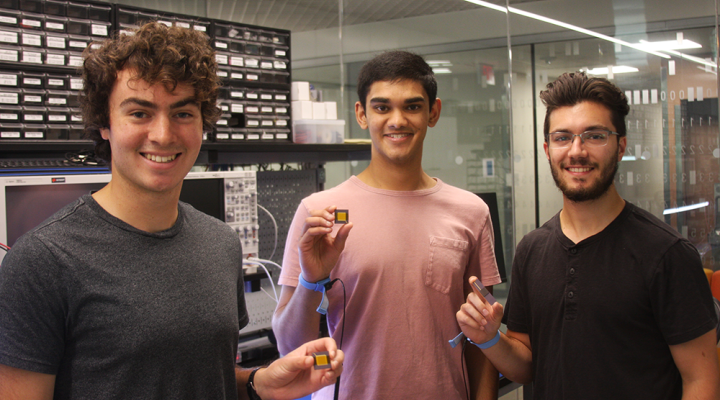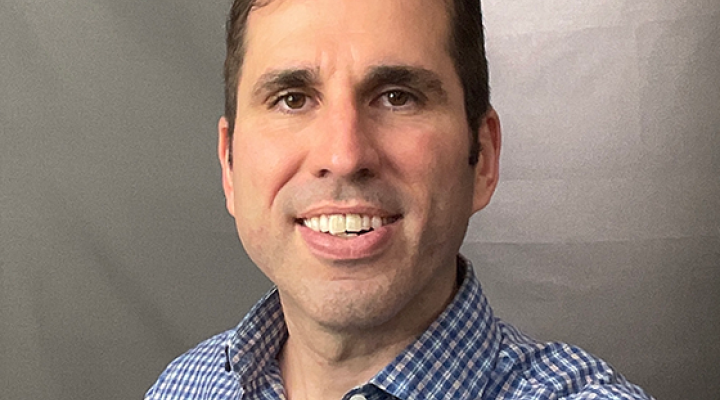The founding idea of the Computer Systems Laboratory (CSL) was the sense that community will lead to more creative thinking. The faculty and students of CSL see it as more than a way to share resources and infrastructure in a collaborative space. The CSL community is built around a fundamental sensibility about what it means to be a researcher.
Science education tends to guide students into increasingly narrow silos of specialization, often causing them to miss out on opportunities to gain different perspectives—to think like other researchers. CSL integrates alternate perspectives into the research mindset by intentionally mixing people from different research groups and different departments.
To Do Better Research
“That cross-pollination of ideas and different ways of thinking becomes second nature to the students,” said ECE Professor José Martínez, “so when they are thinking about a problem, they know they are in an ecosystem that allows them to think differently, to think with an open mind about integrating specialties. And this approach tends to be much more fruitful in the pursuit of creative solutions to problems.”
“That's the genesis of CSL's sense of community,” he continued. “It’s to do better research.”
Adrian Sampson, assistant professor of computer science, supports this mission of molding students’ research practice through community. “Dialogue with other people and a shared understanding of the context that you're in,” he said, ”That’s something you cannot get from reading any book or paper, but it's an integral part of a person's development from being a fresh college graduate to becoming a full-fledged independent researcher.”
ECE Professor Ed Suh emphasizes that CSL attracts genuinely collaborative people. “It’s very easy to talk to other groups. Those things happen much more organically here.”
“CSL was created right around the time EE became ECE,” said Associate Professor Christopher Batten, “and I think the fact that we’ve broadened from an EE to an ECE department has been pretty critical to our success.”
Rajit Manohar and Mark Heinrich joined Cornell as assistant professors in July, 1998. They saw the potential for creating not just a research group, but a community.
Professor Clif Pollock recalls: “They were two brilliant guys, real characters, and quite independent, who had this kind of crazy can-do attitude and they just made it happen. They put in their own network and hired two more people and pretty soon the computer systems areas were growing. They were leading us.”
Not Just a Lab, But a Culture
Over the intervening years CSL created not just a lab, but a culture. It developed into a new way to think about how research could be done without getting locked into silos.
“Grad school can be an inherently isolating experience,” said Sampson, who joined CSL in 2015. “If you're not careful, you end up toiling by yourself for long hours and not really interacting with anyone else.”
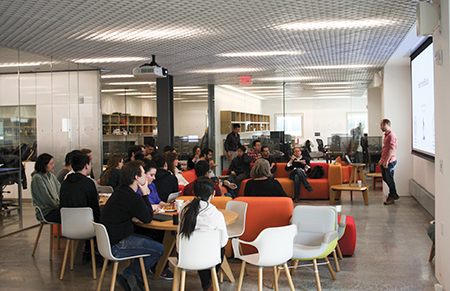 Students who work in CSL report the opposite experience. They speak of making connections, socializing, mutual emotional support, and just hanging out in the dynamic CSL space in Rhodes Hall during all hours of the day. Weekly seminars and communal lunches encourage them to stay engaged with each other, ask questions, and get to know how different people think. The environment feels more like a hip Silicon Valley startup than a stuffy academic lab.
Students who work in CSL report the opposite experience. They speak of making connections, socializing, mutual emotional support, and just hanging out in the dynamic CSL space in Rhodes Hall during all hours of the day. Weekly seminars and communal lunches encourage them to stay engaged with each other, ask questions, and get to know how different people think. The environment feels more like a hip Silicon Valley startup than a stuffy academic lab.
“The numerous research, teaching, and collaboration opportunities in CSL heavily impacted my decision to come to Cornell,” said Shunning Jiang, Ph.D. student in Batten’s group. “CSL is a diverse and cohesive community in both cultural and academic aspects. I’ve had numerous inspirational conversations with colleagues from other research groups, which gave me lots of practice in articulating my research ideas and giving constructive feedback to other people.”
“I prefer a small sized research group with a related community where I can exchange ideas with people in different subfields. I can get the latest updates from other research subjects,” said Yi Jiang, Ph.D. student in computer science advised by Professor Martínez. “The Ph.D. path is tough sometimes,” she continued, “so support from peers who know you matters a lot. CSL provides that and makes me feel connected.”
Other students echoed this feeling of connection. “This group of people brings social benefits and research benefits, both often playing off each other,” said Jordan Dotzel, Ph.D. student of Zhiru Zhang. “A promising research idea might come out of a quick talk by the espresso machine.”
Xiaoyu Yan will complete both his B.S. and M.Eng. in electrical and computer engineering this year, and he has been pursing research within Batten's group. He highlighted CSL’s collaborative atmosphere.
“CSL has the tools for evaluating and experimenting with hardware,” he said. “It’s a good environment for collaboration between different research groups. Another undergraduate student worked in the lab to test chips our group taped out using a variety of shared bench equipment. During the summer, we had three different research groups working on the same project and we were able to quickly share information and work together.”
A Community, Not Just a Collaboration
Facilitating collaboration is part of what makes CSL unique, but it’s not what Batten considers the most important aspect. “There are definitely research collaborations within CSL, but that's a small piece of it,” he said. “The broader context is that our research community creates longer lasting interactions, social interactions, growing what you know about, what you learn, and learning something new—that became our culture. That's why it’s a community, not just a collaboration.“
Sampson went further: “We have a culture that emphasizes independent ideas. Picking what problems to work on and deciding what makes an exciting and creative idea versus a boring, incremental next step is the key to doing good science—to understanding what good work is in the first place.”
In CSL this process of development as an independent researcher is at work from the undergraduate to the postdoctoral level as students begin to envision future career paths.
ECE undergraduate Kenneth Mao has been a research assistant in groups led by professors Zhang, Suh and now Batten. He said, “CSL members have helped me make industry connections that led to internship opportunities, and provided insight as to which classes would align best with my interests. It’s an open and friendly atmosphere that allows you to share your ideas and receive valuable feedback.”
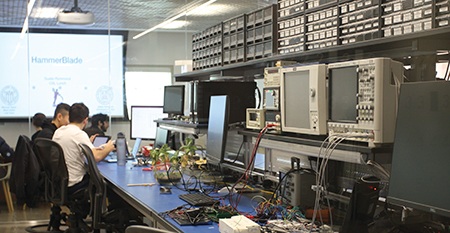 Kaishuo Cheng, also an undergraduate research assistant in Batten’s research group, is affiliated with Computer Science. “I very much appreciate the opportunity to work in CSL,” he said. “It’s been a valuable part of my life at Cornell. This experience allows me to get hands-on with cutting-edge technologies, to meet fantastic students and professors, and to apply what I have learned in class to real-world applications.”
Kaishuo Cheng, also an undergraduate research assistant in Batten’s research group, is affiliated with Computer Science. “I very much appreciate the opportunity to work in CSL,” he said. “It’s been a valuable part of my life at Cornell. This experience allows me to get hands-on with cutting-edge technologies, to meet fantastic students and professors, and to apply what I have learned in class to real-world applications.”
Though rooted firmly in electrical and computer engineering, CSL draws students and faculty from other departments and disciplines, including computer science and mechanical and aerospace engineering. Nikita Lazarev, a Ph.D. student advised by Assistant Professor Christina Delimitrou and Assistant Professor Zhiru Zhang put it very directly: “The CSL community is a great way to share knowledge and extend our expertise beyond our main fields.”
“In the end, better research comes from feeling comfortable in your environment and having conversations with people who have similar—but slightly different—backgrounds,” said Dotzel, chair of the CSL Student Steering Committee. “CSL is a strong model for how research communities should be structured.”
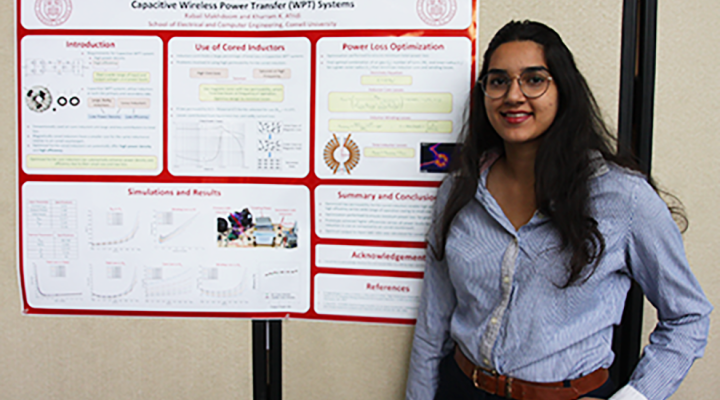


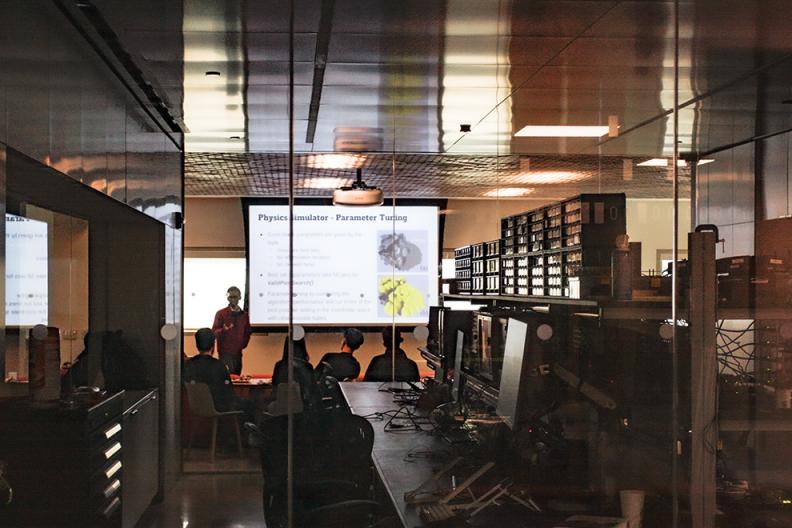
 Students who work in CSL report the opposite experience. They speak of making connections, socializing, mutual emotional support, and just hanging out in the dynamic CSL space in Rhodes Hall during all hours of the day. Weekly seminars and communal lunches encourage them to stay engaged with each other, ask questions, and get to know how different people think. The environment feels more like a hip Silicon Valley startup than a stuffy academic lab.
Students who work in CSL report the opposite experience. They speak of making connections, socializing, mutual emotional support, and just hanging out in the dynamic CSL space in Rhodes Hall during all hours of the day. Weekly seminars and communal lunches encourage them to stay engaged with each other, ask questions, and get to know how different people think. The environment feels more like a hip Silicon Valley startup than a stuffy academic lab. Kaishuo Cheng, also an undergraduate research assistant in Batten’s research group, is affiliated with Computer Science. “I very much appreciate the opportunity to work in CSL,” he said. “It’s been a valuable part of my life at Cornell. This experience allows me to get hands-on with cutting-edge technologies, to meet fantastic students and professors, and to apply what I have learned in class to real-world applications.”
Kaishuo Cheng, also an undergraduate research assistant in Batten’s research group, is affiliated with Computer Science. “I very much appreciate the opportunity to work in CSL,” he said. “It’s been a valuable part of my life at Cornell. This experience allows me to get hands-on with cutting-edge technologies, to meet fantastic students and professors, and to apply what I have learned in class to real-world applications.”